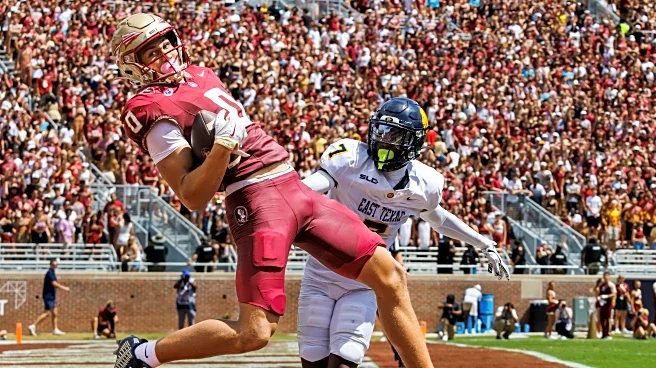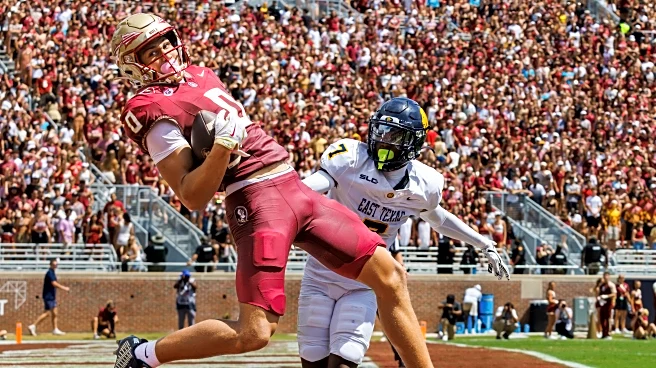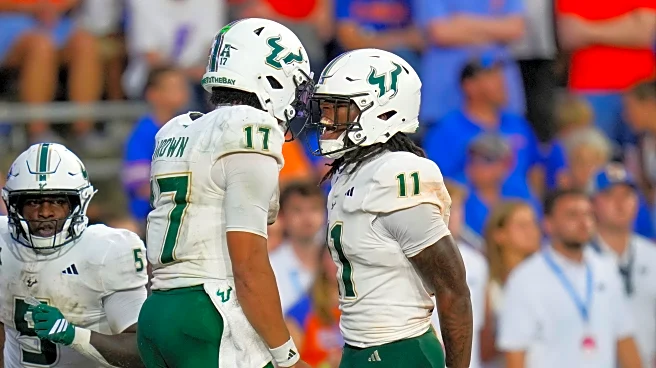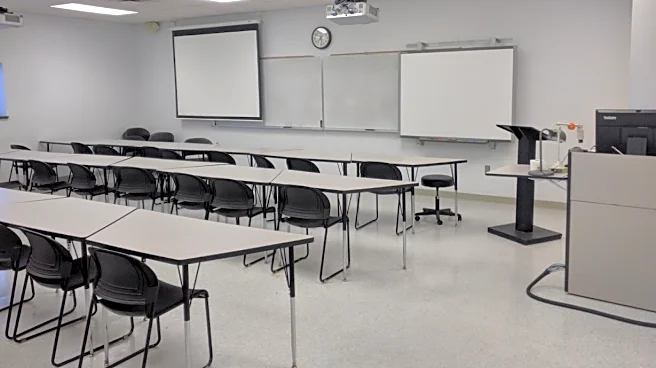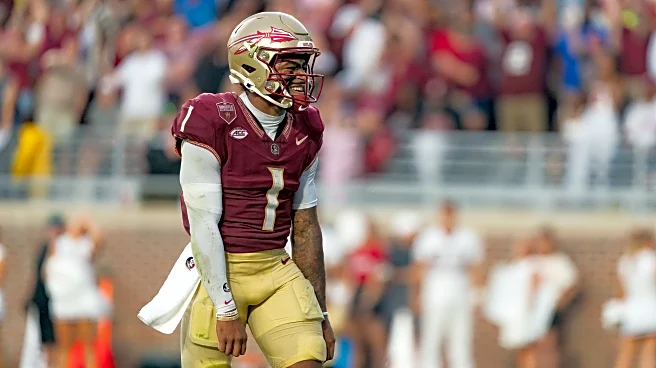What's Happening?
On a historic Saturday in college football, several teams experienced significant blowouts, with eight games decided by margins of 60 points or more. Grambling State faced a 70-0 defeat against Ohio State, the defending national champion. Other notable victories included Florida State's 77-3 win over East Texas A&M and Alabama's 73-0 triumph over Louisiana-Monroe. These games highlight the disparity in resources and scholarships between larger and smaller programs, often driven by financial incentives. Grambling State, for instance, received $1 million from Ohio State for participating in the game.
Why It's Important?
The blowouts underscore the financial dynamics in college football, where smaller programs often play against larger teams for substantial payouts. This practice raises questions about competitive balance and the impact on smaller schools' athletic departments. While these games provide financial benefits, they also highlight the challenges faced by smaller programs in competing against well-resourced teams. The significant payouts, such as Alabama's $2 million to Louisiana-Monroe, illustrate the economic motivations behind these matchups.
What's Next?
The trend of large payouts for mismatched games is likely to continue, as smaller programs rely on these funds to support their athletic departments. However, there may be increased scrutiny on the competitive imbalance and its effects on the integrity of college football. Stakeholders, including coaches and athletic directors, might advocate for reforms to ensure fairer competition and resource distribution. The ongoing debate about the role of money in college sports could lead to policy changes or new regulations.
Beyond the Headlines
The ethical implications of these financial arrangements are significant, as they raise questions about the exploitation of smaller programs for monetary gain. Additionally, the cultural impact on student-athletes who experience such lopsided defeats can be profound, affecting morale and perceptions of fairness in college sports. Long-term, these dynamics could influence recruitment strategies and the overall landscape of college athletics.





